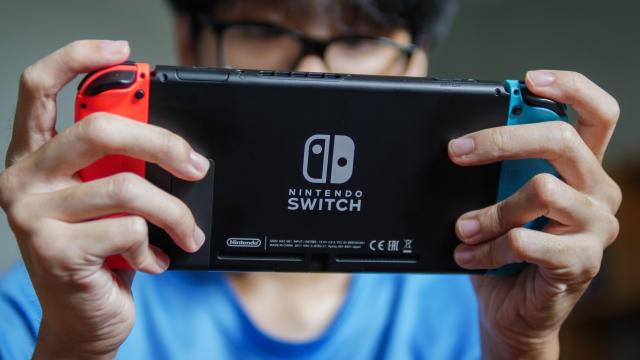The newest Nintendo Switch, commonly known as the Switch OLED, was released in October 2021. It’s the fourth major release in the Switch generation of consoles, after the original Switch in 2017, the Switch V2 in August 2019 (which offered better battery life), and the more basic Switch Lite in September 2019. Four iterations of a system: That’s a lot of choices when they all play the same games. So which one should you get?
Well, the original Switch isn’t really being sold anymore, so if you are buying the full version of the system in 2021, you’re almost certainly going to be getting the V2. The Switch Lite is likewise pretty simple to cross off the list: If you only want to play in handheld mode, it’s a significantly cheaper alternative at $329.95. But that’s a big if; the Lite can’t be hooked up to a dock and there’s no way to play it on your TV, which is a huge downside if you want to enjoy the Switch’s excellent library of couch co-op titles.
So the real choice is between the V2 and the Switch OLED. Here are the key differences to keep in mind when you’re making your purchasing decision.
Four major differences between the Switch V2 and the Switch OLED
Let’s discuss some of the key differences between the original Switch and the newest Switch OLED model.
Price
The new Switch OLED rings in at $539.95, whereas the original Switch is priced at $469.95. This isn’t a huge difference, but hey, you could pick up a game or two for that, so it’s not nothing. The real question is whether the advantages the OLED model offers are worth it to you, based on your gaming habits.
Design
The design of the Switch OLED looks similar to the original Switch, but it does have some noteworthy differences. There’s a new and improved kickstand, which is a great advantage if you ever play in tabletop mode with the controllers detached.
The Switch OLED comes with either white Joy-Cons (classy) or blue and red Joy-Cons (classic). The OLED also includes a sleeker-looking dock featuring an ethernet LAN port, which the original lacks.
Screen
The OLED, as its name suggests, has a 7-inch OLED screen, versus the original’s 6-inch LCD screen. The screen is the most significant difference between the two models. The former’s organic light-emitting diode technology, produces more vibrant colours and even deeper blacks. If you primarily play in handheld mode, it’s a big upgrade. If you always or mostly play docked, it’s less of an issue.
Storage space
At 64GB, the Switch OLED has double the storage capacity of the V2. Either Switch gives you the option of using a microSD card to boost storage, but buying a larger card for the V2 will eat into the price difference between the two.
So is the Switch OLED worth the extra cash?
Because they’re not wildly different, it all comes down to how you game. If you have yet to purchase any Switch model and you plan on playing handheld even just some of the time, go for the OLED and enjoy the extra storage.
If you already have the a Switch V2 (or even the 2017 original), it’s probably not worth the upgrade unless you primarily play handheld and really like owning the best version of all of your devices. And you can rest assured that any Switch you buy will provide a great gaming experience.

Leave a Reply
You must be logged in to post a comment.